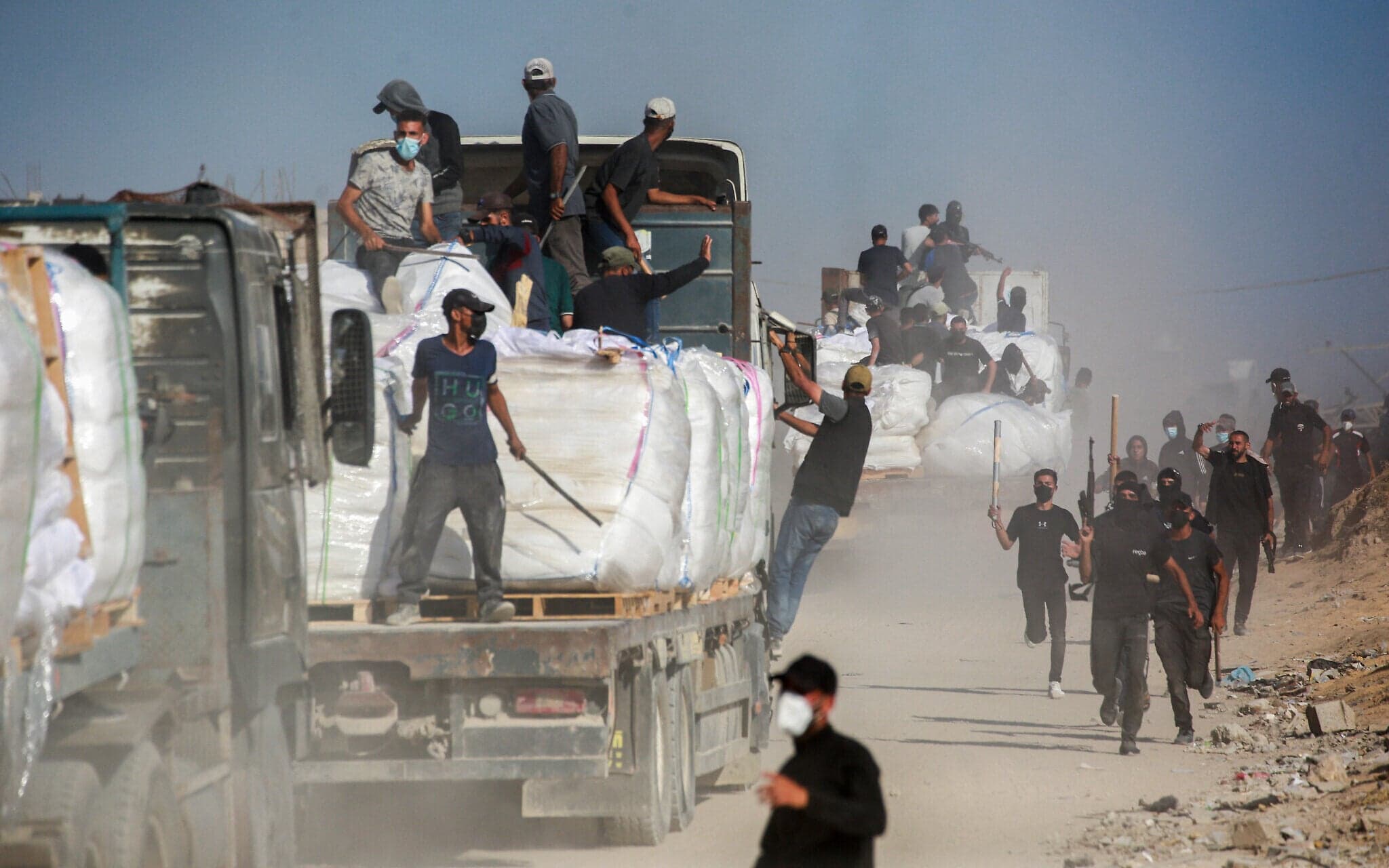The government voted to expand the distribution of humanitarian aid in northern Gaza Saturday night, intensifying simmering tensions between Prime Minister Benjamin Netanyahu and hardliners within the cabinet who oppose a brewing ceasefire deal.
Finance Minister Bezalel Smotrich, whose leads one of two-far right factions thought to be opposed to an agreement, said Sunday his Religious Zionism party would “consider what steps to take” in reaction to the approval of expanded aid into the Strip.
An Israeli official confirmed the cabinet decision to The Times of Israel Sunday, noting that the distribution would be handled by international aid organizations.
Those do not include the US- and Israeli-backed Gaza Humanitarian Foundation, which other aid groups have accused of exposing Gazans aid seekers to deadly IDF gunfire. The GHF operates three distribution sites in southern Gaza and one in central Gaza.
GHF said over a month ago that Israel had agreed to allow it to operate a distribution site in northern Gaza, but that has yet to happen.
Both Smotrich and National Security Minister Itamar Ben Gvir, head of the far-right Otzma Yehudit party, objected to the expansion of aid during the meeting, which included a heated exchange with Israel Defense Forces Chief of Staff Lt. Gen. Eyal Zamir, according to Hebrew media reports.
Smotrich accused Zamir of “failing massively” in controlling the distribution of aid, with the general retorting that Smotrich was “weakening” Israeli troops, the Kan public broadcaster reported.
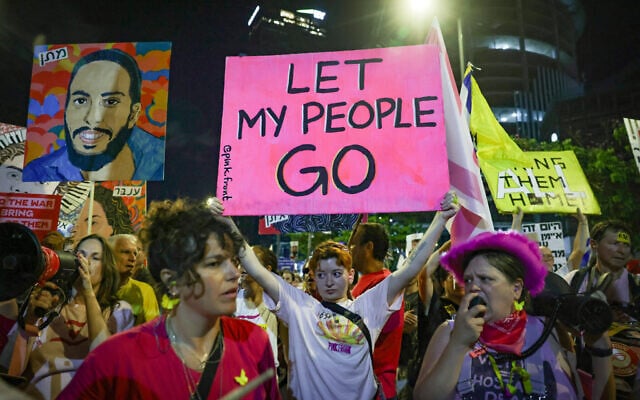
Ben Gvir also reportedly pressed Zamir on the issue, questioning why aid was being distributed if doing so put soldiers in harm’s way and calling for a halt in assistance, after ministers were shown a video of a Gazan crowd running toward an aid distribution center and Zamir highlighted that the crowds were not far from IDF soldiers.
“Why is [aid] being distributed and soldiers endangered?” Ben Gvir was quoted as saying in several Hebrew media reports.
Zamir reportedly responded, “So you want to stop the distribution?”
At which point Prime Minister Benjamin Netanyahu reportedly said: “They are running because food is lacking. When they get a lot, they won’t run like that.”
On Sunday, Smotrich took his attack against Zamir public, writing on X that the decision to let more aid into Gaza was “unacceptable.”
“The chief of staff is failing in his mission,” to manage aid distribution in a way that prevents it from reaching Hamas, Smotrich alleged in a lengthy tweet. He accused Zamir of “forcing the political leadership to bring in aid that ends up in Hamas’s hands and becomes a logistical supply for the enemy during wartime.”
He also accused Netanyahu of failing “to realize, and to enforce among the IDF top command, the political leadership’s decisions on this issue.”
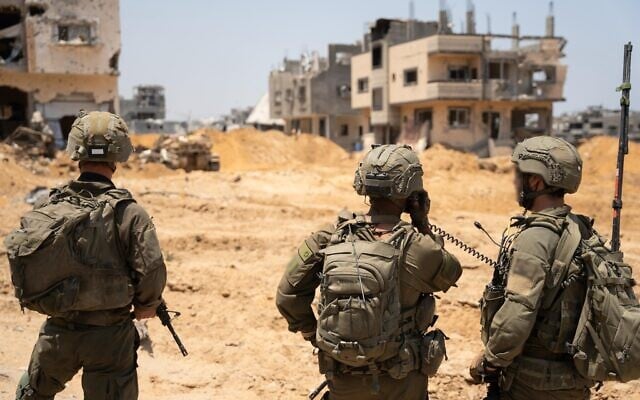
Responding to Smotrich’s reported statements at the Saturday meeting, Blue and White chairman MK Benny Gantz, a former IDF chief of staff who previously served as a member of Netanyahu’s war cabinet, tweeted that Zamir “is an honest, experienced, and statesmanlike individual.”
He slammed what he said were “attempts by ministers to pin the political failure in removing Hamas’s rule on [Zamir].”
According to Channel 12 news, during the Saturday night meeting convened to discuss the emerging Gaza ceasefire-hostage deal, Netanyahu accused Zamir of being too slow to set up a large humanitarian compound in Gaza’s south, in order to facilitate the displacement of Gazan civilians from the north and isolate Hamas.
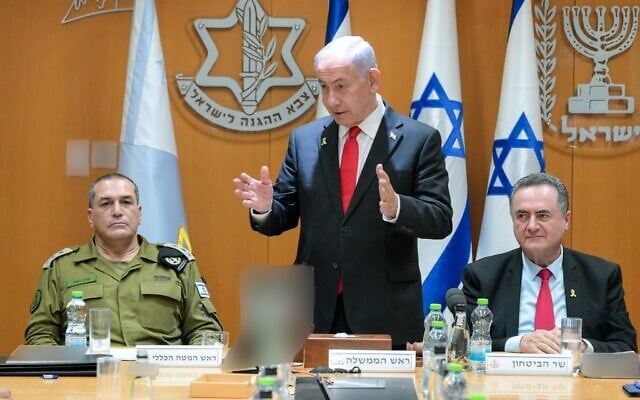
Zamir had clashed with Netanyahu on the issue during a Thursday cabinet session, in which Smotrich demanded the IDF lay siege to Gaza’s north while the IDF chief said the move would force Israel to establish a military government in the Strip, Hebrew media has reported.
Another argument was also reported between Zamir, Smotrich and Ben Gvir during recent cabinet discussions. According to a Channel 13 report, the far-right ministers charged that Zamir had given up on the idea of “complete victory” over Hamas due to his prioritization of the release of hostages, and voiced opposition to a two-month ceasefire in which half of the living hostages would be released. “No problem, then remove ‘the return of the hostages’ as a goal of the war,” Zamir reportedly responded.
Saturday night’s meeting was held hours before Netanyahu was slated to leave to the United States for a meeting with President Donald Trump, who has ratcheted up pressure on Israel to clinch a ceasefire and hostage release deal. Ben Gvir, who quit the government over a previous ceasefire in January, has attempted to woo Smotrich into forming a united front aimed at blocking any agreement with Hamas.
Last week, Israel closed the Erez Crossing into northern Gaza after the UN World Food Programme sent the IDF footage of WFP trucks being commandeered by armed Gazans.
WFP deputy executive director Carl Skau, who was in Israel and Gaza last week, told The Times of Israel that Israel was letting the agency bring in 100 truckloads of food a day, accessing northern Gaza through the Netzarim Corridor and the now-shuttered Erez Crossing.
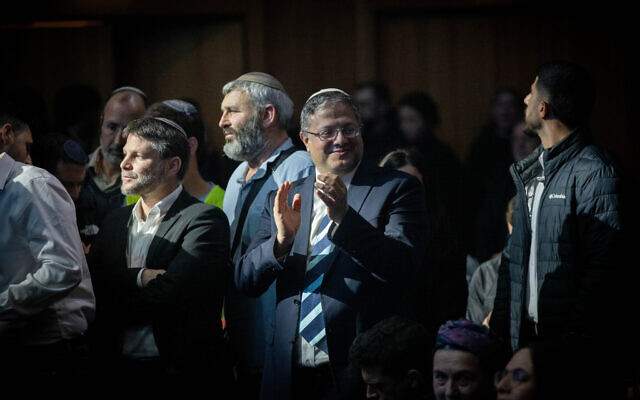
“We’re hopeful that [Erez] would open again because that’s the most secure. It’s the Netzarim Corridor that is very complicated,” said Skau, who met with Israeli officials and also went to Gaza City on Wednesday to meet locals and discuss the humanitarian situation there.
Skau said that if there is a ceasefire in Gaza, the WFP is ready to bring in 500-600 trucks into Gaza by the next day: “We have food and we can mobilize in 24 hours.”
In the Saturday meeting, Maj. Gen. Ghassan Alian, head of COGAT, the Defense Minister humanitarian aid coordinator, told ministers that almost all non-GHF aid trucks entering Gaza were being looted, the Ynet news site reported. The UN has said some looting has taken place around aid distribution, but not to the degree claimed by Israel or the GHF.
Seeking to bypass Hamas, Israel has backed the GHF as an alternative mechanism, but the organization’s aid efforts have faced numerous hurdles, opening only a limited number of sites behind IDF lines and far from where Gaza civilians are concentrated. Gazans have reported near-daily incidents in which groups trying to reach GHF facilities are shot at, leading to mass casualties.
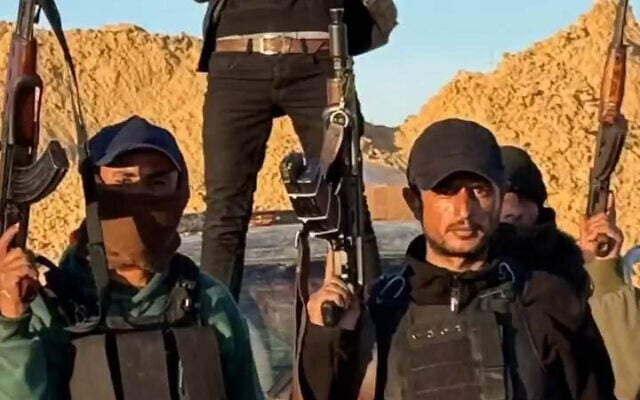
To bolster opposition to Hamas and protect aid, Israel has armed the Rafah-area Abu Shabab militia, which has itself been accused of looting deliveries.
In an interview Sunday with Arabic-language Israeli public broadcaster Makan, militia leader Yasser Abu Shabab confirmed for the first time that his forces were cooperating at some level with the IDF, and did not rule out civil war with Hamas.
“We didn’t have any security like we do in zones under Israeli control. We entered these areas and carried out operations beyond expectations,” he said. “As long as the goal is support and assistance [from the IDF], and nothing more, when we go on a mission, we inform them — nothing beyond that — and we carry out the military operation.”
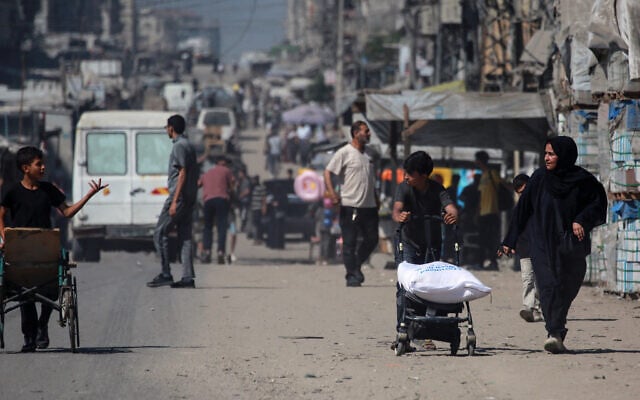
The cabinet decided in its Saturday meeting to dispatch negotiators to Doha for Gaza aimed at finalizing ceasefire-hostage talks, despite calling Hamas’s demands in response to a US- and Israel-backed proposal “unacceptable.”
Israel has insisted that any ceasefire be temporary, but Hamas says it must include a pathway to permanently end the war. According to reports, the most recent formulation would include Israel agreeing to talks on ending the war during the ceasefire.
A previous ceasefire fell apart in early March as Netanyahu refused to negotiate a second phase, which would have required a full Israeli withdrawal from Gaza and talks on ending the war — a red line for Ben Gvir and Smotrich.
Both have insisted that the war continue until Hamas is completely destroyed, following the terror group’s October 7, 2023, onslaught, in which some 1,200 people were killed in southern Israel and 251 kidnapped. Fifty hostages remain in Gaza.

